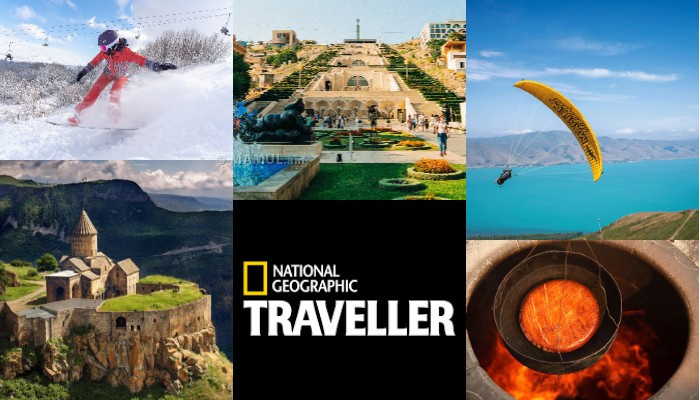+21 °C, +13 °C ... +26 °C Tomorrow:+29 °C

Nestled in the heart of the Caucasus region, at the geographical and ideological crossways of Europe and Asia, Armenia holds its own in terms of history, hiking and cuisine. It’s a mountainous nation, with more than half of its territory elevated between 3,000ft and 6,500ft above sea level. Sweeping plateaus — etched with canyons and bulging with extinct volcanoes — are occasionally interrupted by pockets of fertile lowland in the west, while the eastern part of the country unfolds around the sapphire waters of Lake Sevan, one of Eurasia’s largest freshwater alpine lakes. From the 'pink city', Yerevan, to the charcoal-and-gold Gyumri and the emerald Debed Canyon, here’s how to explore this colourful nation. What’s Armenia known for? For many visitors, it’s the rugged mountains, old-growth forests and semi-desert steppe that command attention. Hiking routes include the Transcaucasian Trail, an epic 497-mile through-hike that runs from north to south and combines agrotourism offerings with nature and culture. Armenia also has viniculture traditions dating back more than 6,100 years, with established terroirs and 400-plus local grape varieties providing the building blocks for a world-class natural wine and brandy scene. Meanwhile, the cuisine, which favours wild herbs and fresh seasonal vegetables, is fuelling a farm-to-table movement that centres on rural villages.
Who should visit? Anyone with even a passing interest in world history will also find Armenia captivating. Home to dozens of museums and several pre-Christian archaeological sites, Yerevan — the capital of Armenia, whose founding date of 782 BCE makes it older than Rome — is the perfect place to unravel chapters of the past. Particular highlights include the Matenadaran, a museum of manuscripts and illuminated volumes, the Cascade Complex, a grand, open-air complex which houses the Cafesjian Center for the Arts, and the History Museum of Armenia. What are some of Armenia’s main draws? Some of Armenia’s most important monasteries are within an hour’s drive of the capital: the UNESCO-listed Geghard is located deep in a gorge and almost invisible until the final approach; Khor Virap sits on a plateau in the shadow of Mount Ararat; and Zvartnots Cathedral is an example of medieval architecture. But it’s the ninth-century Tatev that’s perhaps the most spectacular. Proudly perched on an outcrop in the Syunik Province, five hours south east of Yerevan, this monastic complex impresses as visitors approach via cable car on the Wings of Tatev, the world’s longest reversible aerial tramway. While in the south, be sure to also venture to Khndzoresk, a cave city that was inhabited up until the 1950s, and Zorats Karer, a prehistoric site composed of over 200 carved monoliths. The north of Armenia, meanwhile, is a more verdant area which is well primed for those seeking to immerse themselves in nature. The town of Dilijan is a departure point for forest hikes that lead to sapphire lakes and ancient ruins, while, further north, a visit to two more monasteries, the UNESCO-listed Haghpat and Sanahin, can be paired with whitewater rafting on the Debed River. As you move across the country, a taste of rural life and village hospitality can be found in the many ‘gastro yards’. Located inside family homes and small guesthouses, these kitchens offer home cooking at its finest, showcasing national dishes and delicacies, such as gata pastries near Haghartsin Monastery, and cheese in one of the southern cities, Sisian. When's the best time to visit? Winter is a fine time for an off-season city break, soaking in the mineral-rich Jermuk Hot Springs and skiing in Tsaghkadzor or Yeghipatrush. Late March sees apricot trees beginning to bloom and pop-up dinners held in blossoming orchards around Yerevan, while summer is best for trekking at higher altitudes, watersports on Lake Sevan and seeing sunsets at Debed Canyon. Plan your trip |
MAMUL.am - News from Armenia, Artsakh (Nagorno-Karabakh) and the world
Republication or redistribution of MAMUL.am content is expressly prohibited without the prior written consent.
Address: 1 Charents str., Yerevan, Republic of Armenia.
Tel.: +374 (10) 55-20-59
E-mail: info@mamul.am
Tel.: +374 (91) 99-22-02
E-mail: marketing@mamul.am





















